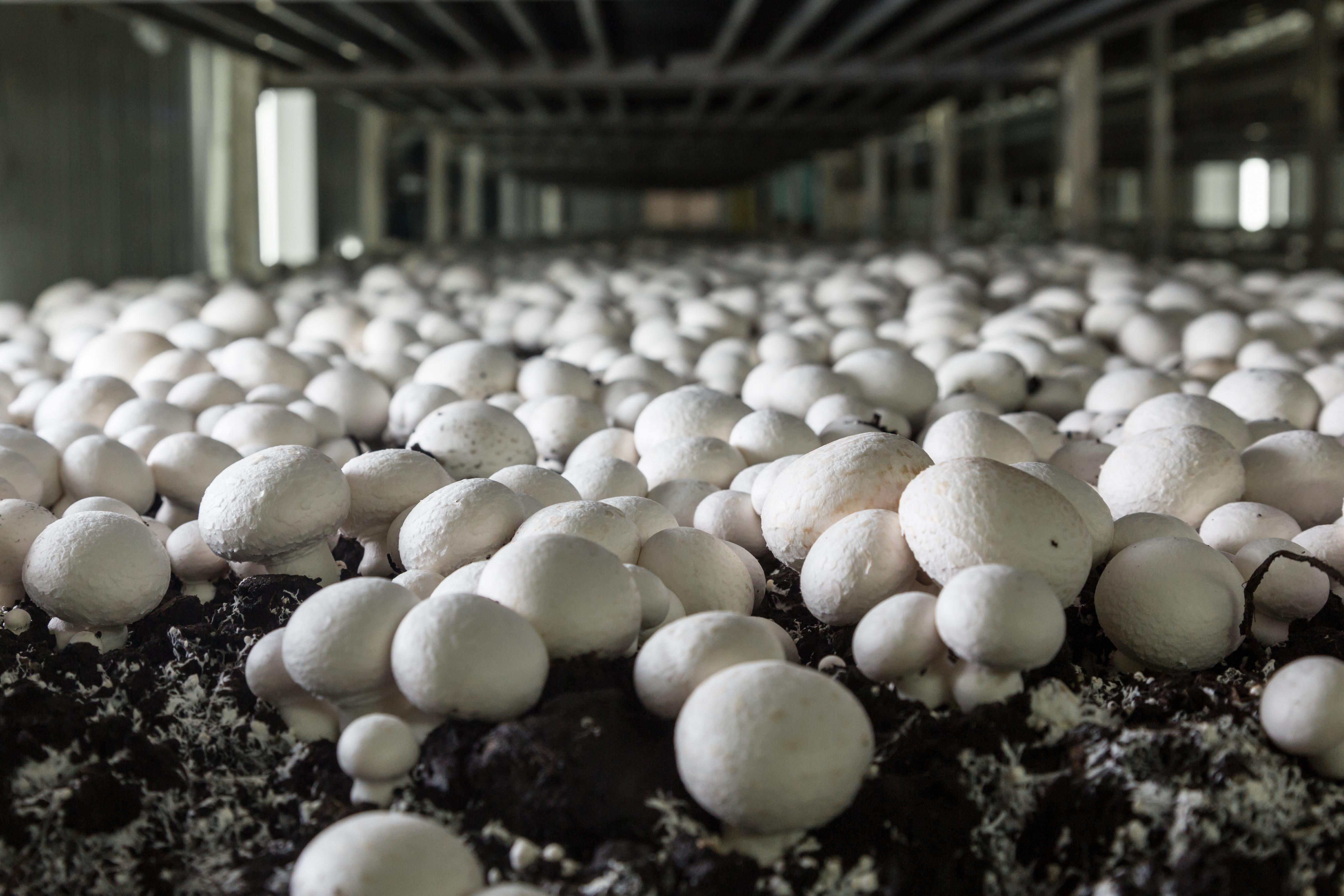Mushroom Spawn (inoculation) and Growing

This post is also available in:
This post is also available in:
![]() हिन्दी (Hindi)
हिन्दी (Hindi)
Once the grower has produced and sterilized the substrate-compost (and the facilities-equipment), he/she can place it into the stacked wooden trays/beds or in plastic bags and add-mix the spawn.
Large commercial vertical units may produce their spawn in labs. However, this procedure requires special scientific knowledge and cannot easily be done by hobbyist mushroom producers. Most buy the spawn from legitimate suppliers. To obtain better results, the grower can experiment and mix different strains from different spawn suppliers since there is a lot of variability between the strains of a mushroom variety. Spawn can be purchased as grain, sawdust, or plug. As the inoculation rate increases, the faster the mycelium will grow through the substrate, but this does not necessarily mean higher yields. A high inoculation rate may benefit beginner mushroom farmers, but it increases production costs. As he/she gains experience, the amounts can gradually decrease.
Depending on the substrate type used, the mushroom beds, and the availability (or not) of labor, the farmer may choose the spawning distribution method (“top spawning” or “through spawning – layer spawning”). Generally, the top spawning is simpler since the inoculum is placed on top of the substrate. After the grower has injected the spawn into the substrate, the incubation phase starts (the spawn’s growth through the substrate). The incubation duration depends on the substrate type and mushroom variety. For common mushrooms (Agaricus) on straw, the incubation time is approximately 14 days under controlled conditions of temperature 23-26°C or 77-80.6°F, relative humidity over 90%, and CO₂ air content at 2000-3000ppm.
After this time (14 days) has passed, they cover the straw with 4-5 cm turf and limestone coating (casting) by providing water until the mycelium appears on the coating (7 days). The conditions are continually stimulated and at the same levels as before. Subsequently, it is time for pinning. To enter the fruiting phase quickly, mushrooms must face some stress conditions. Introducing this stimulus as soon as the colonization is complete is crucial.
Producers reduce the temperature to 15-18°C (60-64.4°F) and CO₂ under 800ppm (or increase oxygen) and fix RH at 80-85%. The temperature should be kept at those levels to have a good and continue fruiting. Higher or lower temperatures are not to be welcomed by the mushrooms. Additionally, watering is needed (2-3 times each week, depending on the temperature and the substrate). Under the ideal conditions, little fruiting bodies (primordia and pinheads) start to appear within approximately 3 days (pinning and knotting). Finally, when common mushrooms are cultivated, the growing chamber should be kept dark throughout the fruiting process. However, specialty mushrooms (like oyster, shiitake, enoki, maitake, wine cap, and pompom) need light to grow properly (LED light can be used).
From this point, producers keep irrigating the growing media until the mushrooms have the preferable commercial size.
References
- https://www.agmrc.org/commodities-products/specialty-crops/mushrooms-profile
- https://smallfarms.cornell.edu/
- https://library.uniteddiversity.coop/Permaculture/Mushroom_Cultivator-A_Practical_Guide_to_Growing_Mushrooms_at_Home.pdf
- https://nhb.gov.in/report_files/button_mushroom/button%20mushroom.htm









































































